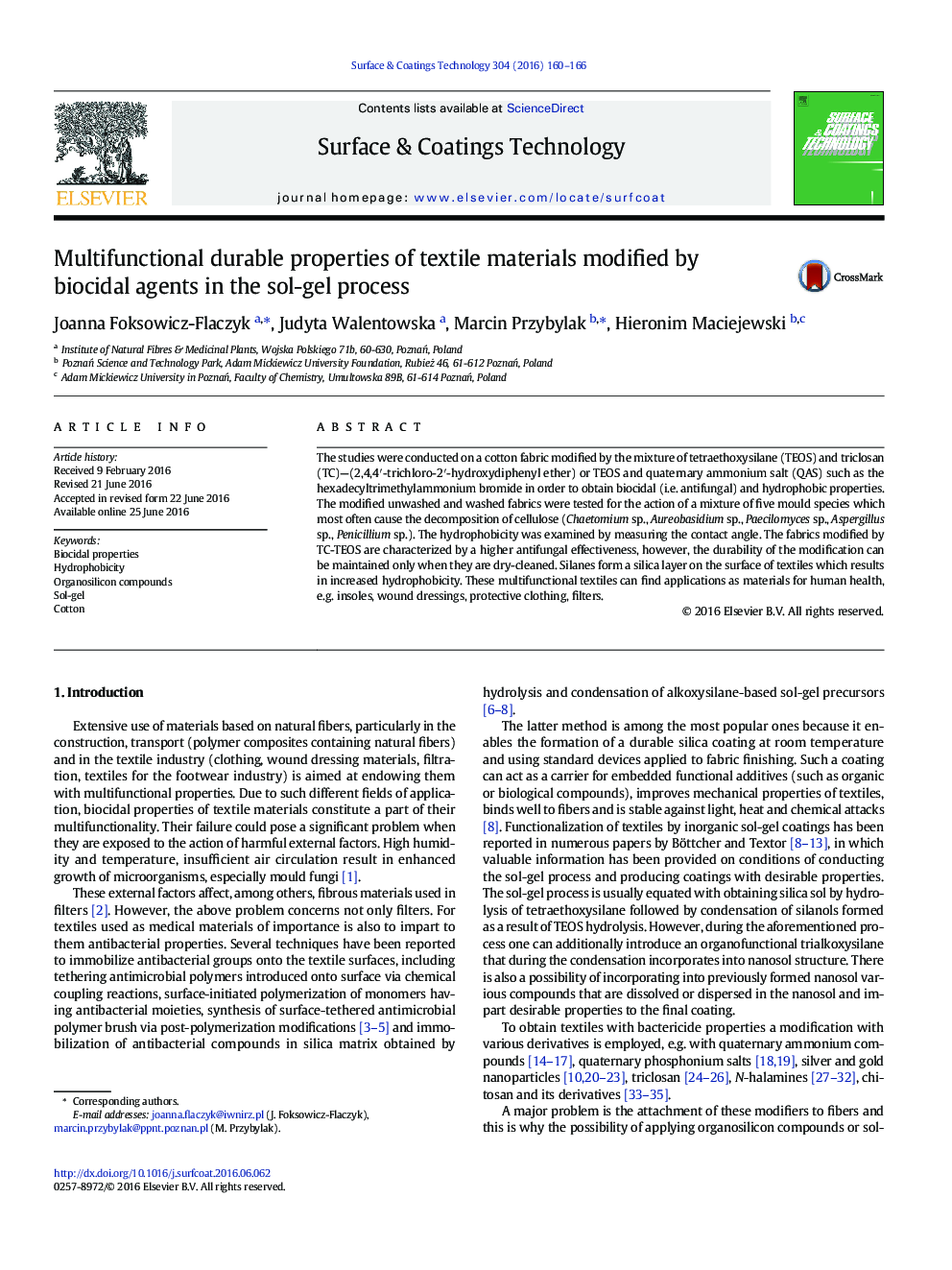| Article ID | Journal | Published Year | Pages | File Type |
|---|---|---|---|---|
| 8024894 | Surface and Coatings Technology | 2016 | 7 Pages |
Abstract
The studies were conducted on a cotton fabric modified by the mixture of tetraethoxysilane (TEOS) and triclosan (TC)-(2,4,4â²-trichloro-2â²-hydroxydiphenyl ether) or TEOS and quaternary ammonium salt (QAS) such as the hexadecyltrimethylammonium bromide in order to obtain biocidal (i.e. antifungal) and hydrophobic properties. The modified unwashed and washed fabrics were tested for the action of a mixture of five mould species which most often cause the decomposition of cellulose (Chaetomium sp., Aureobasidium sp., Paecilomyces sp., Aspergillus sp., Penicillium sp.). The hydrophobicity was examined by measuring the contact angle. The fabrics modified by TC-TEOS are characterized by a higher antifungal effectiveness, however, the durability of the modification can be maintained only when they are dry-cleaned. Silanes form a silica layer on the surface of textiles which results in increased hydrophobicity. These multifunctional textiles can find applications as materials for human health, e.g. insoles, wound dressings, protective clothing, filters.
Related Topics
Physical Sciences and Engineering
Materials Science
Nanotechnology
Authors
Joanna Foksowicz-Flaczyk, Judyta Walentowska, Marcin Przybylak, Hieronim Maciejewski,
